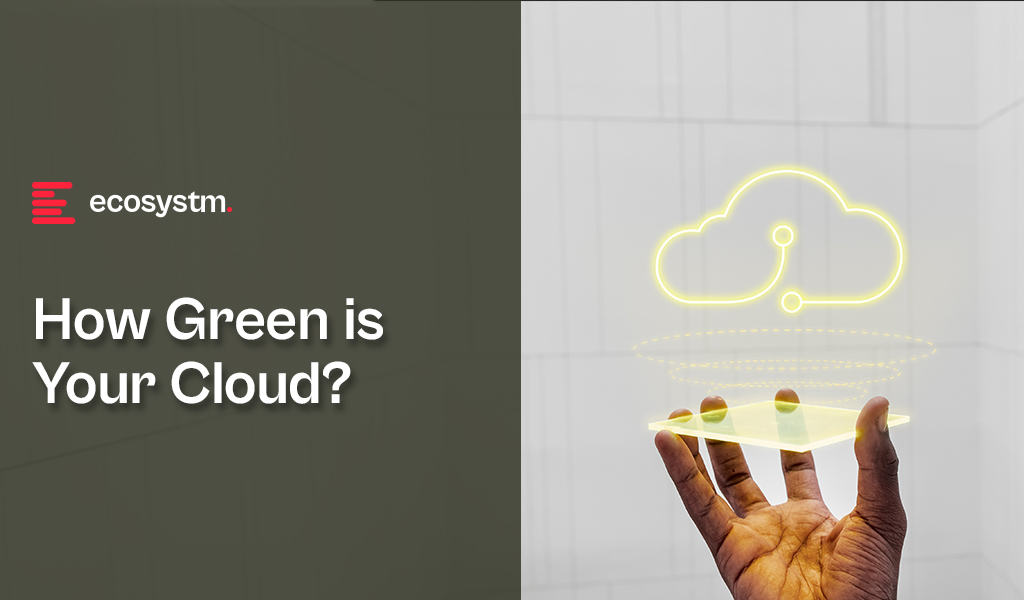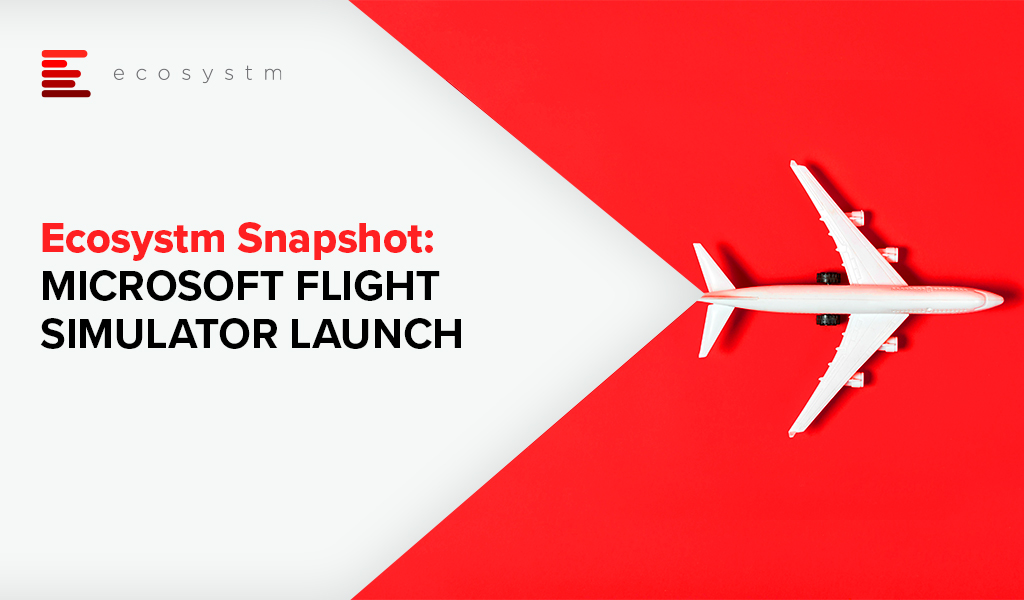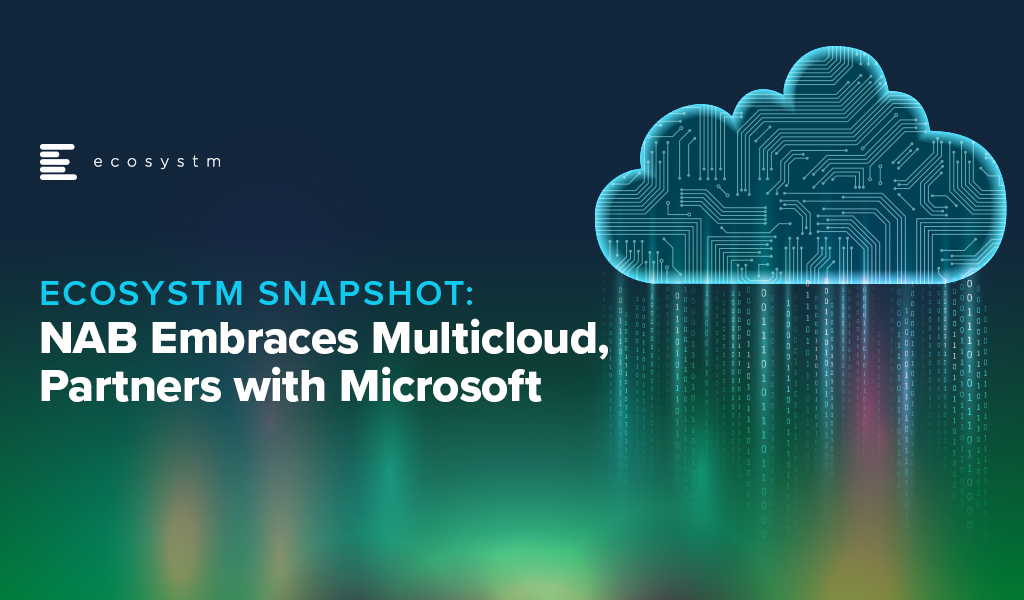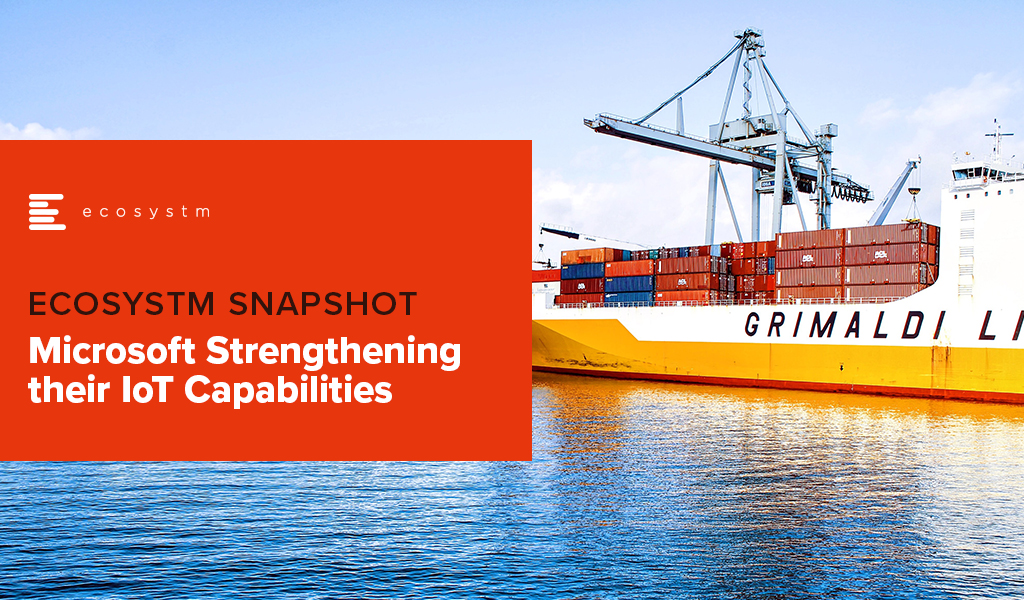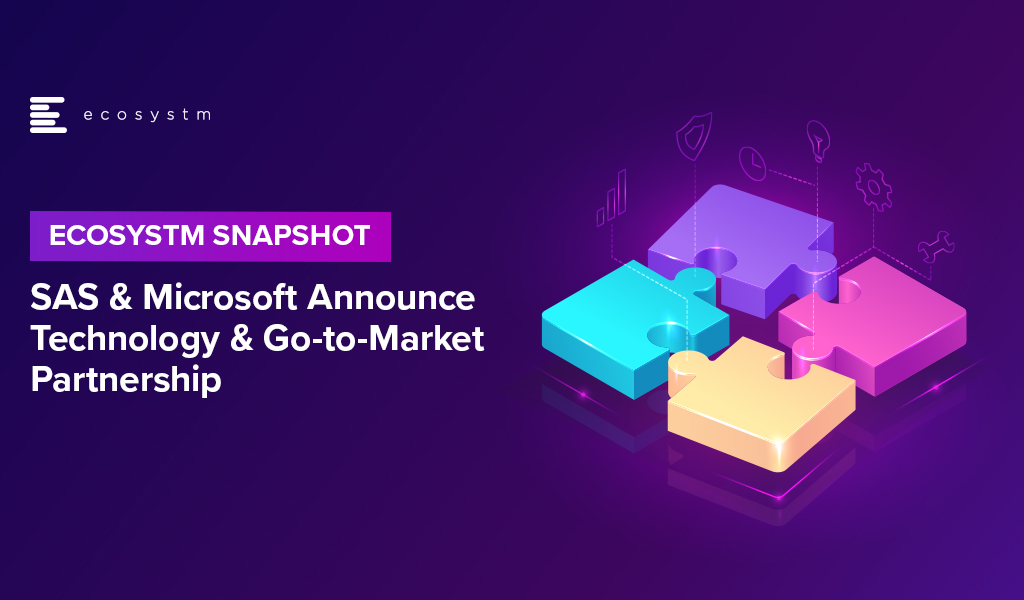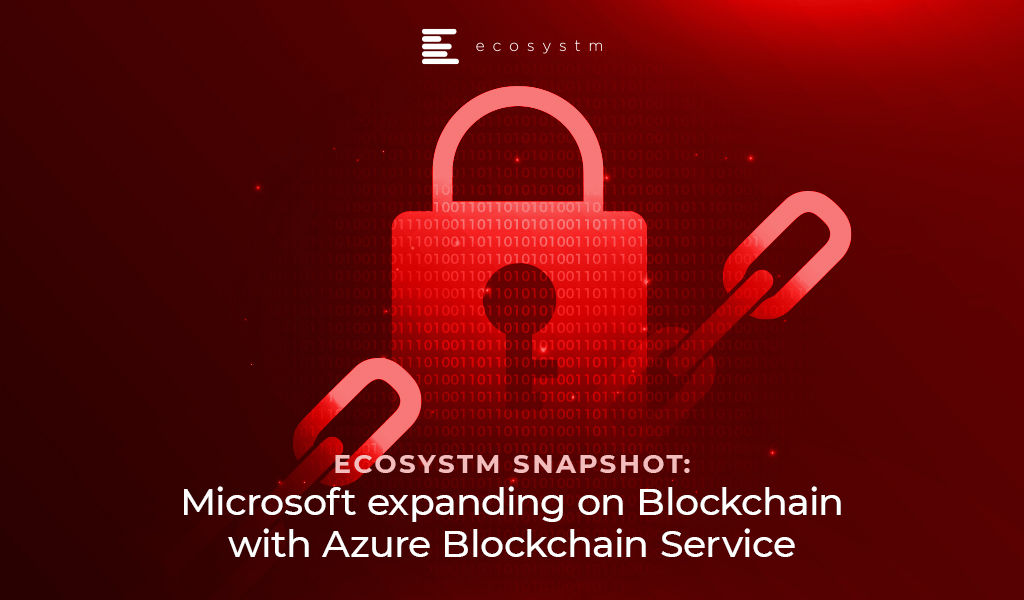For many organisations migrating to cloud, the opportunity to run workloads from energy-efficient cloud data centres is a significant advantage. However, carbon emissions can vary from one country to another and if left unmonitored, will gradually increase over time as cloud use grows. This issue will become increasingly important as we move into the era of compute-intensive AI and the burden of cloud on natural resources will shift further into the spotlight.
The International Energy Agency (IEA) estimates that data centres are responsible for up to 1.5% of global electricity use and 1% of GHG emissions. Cloud providers have recognised this and are committed to change. Between 2025 and 2030, all hyperscalers – AWS, Azure, Google, and Oracle included – expect to power their global cloud operations entirely with renewable sources.
Chasing the Sun
Cloud providers are shifting their sights from simply matching electricity use with renewable power purchase agreements (PPA) to the more ambitious goal of operating 24/7 on carbon-free sources. A defining characteristic of renewables though is intermittency, with production levels fluctuating based on the availability of sunlight and wind. Leading cloud providers are using AI to dynamically distribute compute workloads throughout the day to regions with lower carbon intensity. Workloads that are processed with solar power during daylight can be shifted to nearby regions with abundant wind energy at night.
Addressing Water Scarcity
Many of the largest cloud data centres are situated in sunny locations to take advantage of solar power and proximity to population centres. Unfortunately, this often means that they are also in areas where water is scarce. While liquid-cooled facilities are energy efficient, local communities are concerned on the strain on water sources. Data centre operators are now committing to reduce consumption and restore water supplies. Simple measures, such as expanding humidity (below 20% RH) and temperature tolerances (above 30°C) in server rooms have helped companies like Meta to cut wastage. Similarly, Google has increased their reliance on non-potable sources, such as grey water and sea water.
From Waste to Worth
Data centre operators have identified innovative ways to reuse the excess heat generated by their computing equipment. Some have used it to heat adjacent swimming pools while others have warmed rooms that house vertical farms. Although these initiatives currently have little impact on the environmental impact of cloud, they suggest a future where waste is significantly reduced.
Greening the Grid
The giant facilities that cloud providers use to house their computing infrastructure are also set to change. Building materials and construction account for an astonishing 11% of global carbon emissions. The use of recycled materials in concrete and investing in greener methods of manufacturing steel are approaches the construction industry are attempting to lessen their impact. Smaller data centres have been 3D printed to accelerate construction and use recyclable printing concrete. While this approach may not be suitable for hyperscale facilities, it holds potential for smaller edge locations.
Rethinking Hardware Management
Cloud providers rely on their scale to provide fast, resilient, and cost-effective computing. In many cases, simply replacing malfunctioning or obsolete equipment would achieve these goals better than performing maintenance. However, the relentless growth of e-waste is putting pressure on cloud providers to participate in the circular economy. Microsoft, for example, has launched three Circular Centres to repurpose cloud equipment. During the pilot of their Amsterdam centre, it achieved 83% reuse and 17% recycling of critical parts. The lifecycle of equipment in the cloud is largely hidden but environmentally conscious users will start demanding greater transparency.
Recommendations
Organisations should be aware of their cloud-derived scope 3 emissions and consider broader environmental issues around water use and recycling. Here are the steps that can be taken immediately:
- Monitor GreenOps. Cloud providers are adding GreenOps tools, such as the AWS Customer Carbon Footprint Tool, to help organisations measure the environmental impact of their cloud operations. Understanding the relationship between cloud use and emissions is the first step towards sustainable cloud operations.
- Adopt Cloud FinOps for Quick ROI. Eliminating wasted cloud resources not only cuts costs but also reduces electricity-related emissions. Tools such as CloudVerse provide visibility into cloud spend, identifies unused instances, and helps to optimise cloud operations.
- Take a Holistic View. Cloud providers are being forced to improve transparency and reduce their environmental impact by their biggest customers. Getting educated on the actions that cloud partners are taking to minimise emissions, water use, and waste to landfill is crucial. In most cases, dedicated cloud providers should reduce waste rather than offset it.
- Enable Remote Workforce. Cloud-enabled security and networking solutions, such as SASE, allow employees to work securely from remote locations and reduce their transportation emissions. With a SASE deployed in the cloud, routine management tasks can be performed by IT remotely rather than at the branch, further reducing transportation emissions.

Last year Microsoft announced it was developing a new version of Flight Simulator which caught many of us by surprise. Flight Simulator? Really? The last launch of a new version of the game was in 2006 – 14 years ago, now!! How does something come back after all these years?
Now that it has launched about a week ago, the initial feedback has been extremely positive and it appears that Microsoft has a winner here. An analysis even claims that it will spur $2.6 billion in hardware sales of PCs, game accessories and the like!
I wanted to unpeel the onion a bit to take a closer look at what is going on and discovered a world of interesting developments around this product.
My first thoughts on hearing the announcement was that Microsoft, who has been steadily losing the battle of consoles to Sony’s PlayStation platform, was reviving this old favourite to resuscitate its drooping share.
Not a bad move. Flight Simulator has a core of die-hard fans – it even boasts of professional pilots who play the game as relaxation. It has a long history and a captive fan community. But it is old. That loyal community is not part of the demographic that a gaming company would normally look at today.
The other interesting aspect to consider is the COVID-19 situation this year. Obviously, Microsoft did not know this at the time they embarked on this project but the pandemic has turned everything on its head – hardware sales are through the roof – including accessories, at a time when people have been homebound and looking for entertainment within the four walls of one’s abode. The Ecosystm Digital Priorities in the New Normal study finds that 76% of organisations increased their hardware investments when the crisis hit – and 67% of organisations expect their hardware spending to go up in 2020-21. And that is only on the enterprise side of things. On the consumer side, at this point joysticks are in short supply – a trend that seems to have been accelerated by the Microsoft launch last week, interestingly – and so are PCs. The PC vendors are all enjoying a bumper year of growth. This is an ideal time to launch a really cool new version of the game.
Microsoft’s Bigger Game
The reality however is that while Flight Simulator will add to the revenue and also give Xbox One a fillip, Microsoft is probably after a much bigger “game” (excuse the pun!). The company has called its ‘Xbox Game Pass’ the Netflix of the gaming market. With multiple cloud-based gaming platforms having been launched – many with subscription services – the battle is on to decide the winners in a relatively new space. To this end, Microsoft has announced an intention to make Game Pass available across different devices – XBox console, PCs, tablets, phones. Having a title like Flight Simulator available through Game Pass, will act as a key hook to get customers to sign up for the subscription.
The new Flight Simulator version has been developed using AI and real-world imagery brought in with data from Bing Maps. With the newly added realistic scenery, it also seems like a great fit for use with the HoloLens Virtual Reality headsets. In one shot Microsoft is showcasing their lead in areas of technology which are likely to prove attractive to developers in a big way. I believe that this is a way for them to entice more developers on to Azure and to Microsoft cloud to develop their games – “AI SDKs anyone? Virtual Reality tools anyone?”
What seems at first glance like the launch of a new “future is here” version of a great game will turn out to be a possible big swing at multiple targets by Microsoft – at leadership in gaming with Game Pass; at reviving Xbox fortunes; at leadership in game development platforms, with Azure packing AI services, Bing Maps, AR/VR tools, among other technologies to move more development on to the Microsoft cloud. In the process Microsoft launched a highly enjoyable game and got closer to their ultimate aim to indeed become the Netflix of gaming.
Great move Microsoft! Tip: This could also give them a foothold in the virtual travel and virtual vacations market! That would be a hot seller in these times.
The National Australia Bank (NAB) and Microsoft announced a strategic partnership last week, to develop and architect a multicloud environment to be used by both NAB and its New Zealand counterpart, Bank of New Zealand (BNZ).
The five-year partnership will involve Microsoft and NAB sharing development costs and investments to migrate around 1,000 out of 2,600 applications from the NAB and BNZ stacks, on Microsoft Azure. By 2023, NAB aims to run 80% of its application on the cloud, build a robust cloud foundation, and enable customers to access applications and services on the cloud.
The partnership aims to support NAB’s commitment to continuous improvement and innovation, leveraging the Microsoft global engineering team. It also involves setting up of the NAB Cloud Guild program, where Microsoft will train 5,000 NAB and BNZ technologists to equip them on cloud and allied technology skills.
NAB and Microsoft have previously collaborated to improve the experience for NAB customers, through cloud-based applications. NAB’s cloud-based AI powered ATM was the result of a proof-of-concept (PoC) developed on Microsoft Azure’s cognitive services, in 2018. It involved general ATM security captures along with facial biometrics to enable customers to withdraw cash without a card or a phone.
Besides the partnership with Microsoft, NAB also uses Google Cloud for multicloud workloads as well as AWS for its AI competencies and resources across platforms. In February, NAB launched an AI-based voice service to boost the bank’s contact centre experience along with AWS.
Ecosystm Comments
Ecosystm Principal Advisor, Tim Sheedy says, “If ever there was a sign that multicloud is the predominant approach for businesses, this is it. NAB is a big AWS client – in Australia and New Zealand. They lead the way for businesses in training thousands of employees on AWS technologies through their Cloud Guild. But now Azure is also developing a strong foothold in NAB – the public cloud services market is not a one-horse race!”
“Many businesses that have standardised on – or preferred – a single cloud vendor will find that they will likely use multiple cloud environments, in the future. The key to enabling this will be the adoption of modern development environments and architectures. Containers, microservices, open-source, DevOps and other technologies and capabilities will help them run their applications, data and processes across the best cloud for them at the time – not just the one that they have used in the past.”
Sheedy thinks, “NAB’s competitive advantage will not come from whether they are using AWS or Azure – it will come from the significant time and effort they are investing in giving their employees the skills they need to take advantage of these environments to drive change at pace. Too many businesses are increasing their cloud usage without making the necessary investments to upskill their employees – if you know you are planning to spend more on the cloud, then start now in reskilling and upskilling your staff. There is already a real shortage of cloud skills and it is only going to get worse.”
Gain access to more insights from the Ecosystm Cloud Study

Microsoft announced in 2018 that they were investing US$ 5 billion globally in IoT innovation and research for the next 4 years – the focus being on secure IoT, creating development tools and intelligent services for IoT and the edge, and on growing their partner ecosystem.
Last year Microsoft’s industry updates showcased several IoT implementations across industries and their edge-based solutions portfolio, customers and partner ecosystem. The tech giant revealed nearly 150% YoY growth with customers such as Starbucks, Chevron, Walmart, Walgreens, BMW and Volkswagen added to the Azure platform, leveraging IoT services to accelerate their digital transformation journey. Microsoft also announced more than 70 partnerships with some of the big names in the IoT ecosystem, such as Universal Electronics, SAP, and Cradlepoint to extend solutions and support for the Microsoft IoT business.
Extending IoT Capabilities with Strategic Partnerships
There were several recent announcements which indicate that Microsoft is focused on strengthening their IoT and industry capabilities – and this is a timely move. Ecosystm Principal Advisor, Kaushik Ghatak says, “COVID-19 has brought to the fore the need for managing risks better. And the key to managing risks is to have better visibility and drive data-driven decisions; the sweet spot for IoT technologies. IoT is at the core of the Industry 4.0 story where deep domain expertise in industry verticals is a pre-requisite to success. It is heartening to see that Microsoft is taking the lead in building a powerful ecosystem by developing key partnerships with leading providers of Industry solutions.”
Last week, Microsoft and Hitachi announced a strategic alliance to accelerate the digital transformation of the Manufacturing and Logistics industries across Southeast Asia, Japan and North America. The first solutions are expected to be made available in Thailand as early as this month. Hitachi brings to the table their industry solutions, such as Lumada, and their IoT-ready industrial controllers HX Series. These solutions will be fully integrated with the Microsoft cloud platform, leveraging Azure, Dynamics 365 and Microsoft 365.
The three areas where the Hitachi solution is expected to bring strength to Microsoft’s industry offering are:
- Process optimisation and increased manufacturing productivity. Hitachi Digital Supply Chain and Azure IoT leveraged to analyse 4M data collected from manufacturing sites for visualisation/ analysis of production processes
- Logistics optimisation. Digital technologies such as Azure Maps and Hitachi Digital Solution for Logistics/Delivery Optimisation Service to analyse data on parameters such as traffic congestion, storage locations and delivery locations, to enabling smart routing
- Predictive maintenance and remote assist. HoloLens 2, Dynamics 365 Remote Assist and other smart devices, to empower first-line workers
Ecosystm Principal Advisor, Niloy Mukherjee feels that with projections of 43 – 100 billion IoT connected devices in the next few years, IoT is obviously a hot space. “We can think of IoT as a stack with four layers – the devices/sensors, the connection layer, the cloud and computing layer and the business apps layer. With Azure, Microsoft is very well positioned in the cloud and compute layer and can grab a large chunk of this fast-growing market. Tying with players like Hitachi allows Microsoft to integrate with the business apps layer and perhaps also some devices. It is absolutely the right strategy and I would expect them to go for many more such alliances. With Microsoft’s strength in the enterprise market, IoT gives them a great opportunity to increase their share of cloud workloads with customers.”
Addressing the Challenges of IoT Adoption
Ecosystm research shows that the biggest challenges in IoT adoption are security and integration concerns (Figure 1).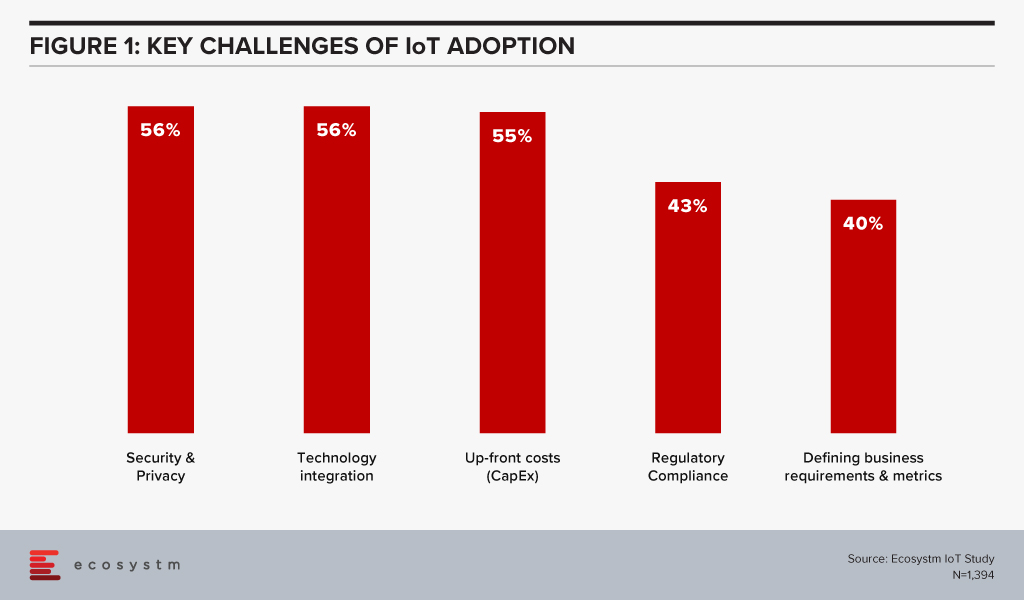
In 2018, when Microsoft started actively focusing on IoT, they also launched the Azure Certified for IoT program to maintain consistency and enhanced interoperability across their device partner ecosystem. This addresses the integration challenges that organisations face when deploying IoT. Microsoft continues to grow their IoT ecosystem, ensuring faster IoT deployments, with hardware and software that has been pre-tested and verified to work with Microsoft Azure IoT services. Last week also saw Cyient joining Microsoft Azure as a certified partner for IoT. Cyient IoT Edge Gateway 5400, their flagship IoT gateway product is now Microsoft Azure Certified for IoT. This is expected to accelerate IoT deployment for Cyient customers and enable a seamless integration of edge devices to the cloud.
Ghatak says, “To scale up their IoT business, Microsoft would need to develop a substantially large ecosystem, beyond few key players such as Hitachi, who dominate at the large enterprise segment of the market. That is where partnerships with smaller and niche industry solutions providers such as Cyient fits in. More niche providers such as Cyient will increase Microsoft’s reach into medium and smaller segments of the enterprise market.”
Addressing the Increasing Threat Landscape
Recent cyber-attack trends and security breach statistics reveal a huge increase in cybercrime activities, in the wake of the COVID-19 pandemic. As the number of IoT sensors, devices and gateways increase, so does the risk of security breaches. As shown in figure 1, cybersecurity concerns are real and can act as a barrier to IoT adoption, despite the benefits that the technology brings. Automated vulnerability management capabilities, that allow risk assessment and patch installation where necessary will see an increase in IoT adoption.
To complement Microsoft Azure IoT security, Microsoft acquired IoT security specialist CyberX, last month. The acquisition will enable greater security for the IoT devices connected to the Microsoft network and will help their customers to gain visibility through a map of devices thus allowing them to gather information on security risks associated with thousands of sensors and connected devices. This will enhance smart grid, smart manufacturing and digital assets and profiles and reduce vulnerabilities across production and supply chain.
Mukherjee says, “The key concern for the expansion of IoT into more and more use cases in the next few years is really going to be security. New areas like VR and AR are emerging from futuristic fantasy to real-world reality. These will tempt many enterprises – but security will be the key concern to address. And so, Microsoft’s simultaneous push on security completely aligns with this. As the Ecosystm MSSP VendorScope results show Microsoft’s strategy on cybersecurity seems to be working.”
Talking about Microsoft’s go-to-market strategy, Mukherjee adds, “Microsoft is obviously spreading its net far and wide for all cloud applications including IoT, to go-to-market with partners. One of the key focus area here is the SME segment, which is forecast to be one of the hot growing segments for IoT in the next few years. The more offerings from the business apps layer that Microsoft integrates, the more they enable their partners to sell to their customers.”

This week saw SAS and Microsoft announce a strategic partnership both in their technology offerings and go-to-market strategy. SAS analytical products and industry solutions will be migrated onto Microsoft Azure as the preferred cloud provider for the SAS Cloud. Microsoft hopes to leverage SAS’ industry expertise, especially in healthcare and financial services. This partnership builds on SAS integrations across Microsoft cloud solutions for Azure, Dynamics 365, Microsoft 365 and Power Platform.
Here is what our Analysts say:
“To date, the focus of cloud computing has been around providing customers with levels of agility, speed, and scalability that cannot be provided by on-premises solutions. Customers have benefitted from this cloud functionality by being able to provision new services rapidly, pivot swiftly when they need to change their business models and build resilience and flexibility into the ways in which they do business. Today, customers are asking for more. Microsoft has responded to this demand by forming or enhancing cloud partnerships with leading cloud vendors including Salesforce, SAP, Oracle, Workday, ServiceNow and Adobe, as part of an overall strategy to make it easier for customers to choose Azure as their key enterprise foundation, and to offer more functionality.
Across industries, from healthcare to financial services, businesses finally realise the potential value of data. They recognise that the most competitive businesses are those that fully leverage the data that they can access. Businesses want cloud services to offer AI and machine learning capabilities. They want to use these capabilities to become more innovative and more competitive. To do this, these cloud services need to be integrated more tightly with capabilities which Microsoft does not have.
SAS is the leader in data analytics and AI software for enterprises, so it makes perfect sense for Microsoft to partner with the company. Integrating SAS models with Microsoft’s cloud estate, in particular Azure will enable Microsoft to offer its customers more than the typical benefits of cloud services. They can offer their customers intelligent cloud services.
SAS can offer its customers a more comprehensive solution by integrating its AI and machine learning capabilities into the Microsoft cloud estate. SAS and Microsoft will combine their engineering resources to ensure that SAS’ analytics products work well on Azure. A key priority is building an Azure-optimised version of Viya, the cloud version of SAS’ core analytics toolkit. SAS will also look at ways in which it can integrate its software with the native analytics services provided in Azure.
Importantly, companies will create joint solutions across multiple verticals. An example of a joint solution is SAS’ IoT analytics and the Azure IoT platform being used to increase situational awareness of rising stream levels, to predict where flooding might occur, thus improving emergency response.
SAS software will continue to be cloud-agnostic. But, SAS itself will migrate its internal operation and its global cloud business to Azure. The expanded partnership with Microsoft does not impact SAS customers who run on AWS or GCP. But, Azure customers can expect to see benefits over time as SAS and Microsoft work closely on joint solutions.”
“The SAS and Microsoft relationship goes well beyond ‘Azure is our cloud hosting platform of choice’. It brings together Microsoft’s leading suite of AI tools and cloud infrastructure and platform capabilities and the leading analytics and intelligent applications provider. Through the combined toolset, every-day applications have the opportunity to become even more intelligent – and the industry-specific intelligent business processes that SAS is known for will be able to be hosted on the cloud, and more deeply integrated into existing solutions and PaaS services. The ability to embed SAS workloads into containers means that a broader user set can access and learn from the analytics that they provide – and automate an even greater number of business and customer processes using the AI and Analytics toolsets from both providers.
It also simplifies the management of SAS software and gives a clear and easy path to the public cloud for SAS customers who have not yet made that transition.
The partnership has the opportunity to further accelerate Microsoft’s transition towards even smarter applications. Microsoft has already been recognised in the market as having one of the better AI capabilities – mostly because of embedding intelligence into existing applications and processes. But Microsoft was never going to be able to provide the intelligence for every process in every industry. This partnership will accelerate Microsoft towards the automation of more processes that are used by customers across the spectrum of sectors and industries – and it obviously extends SAS’ reach beyond their traditional customer base.”
With understanding and acceptance of blockchain increasing, enterprises have started adopting blockchain to store digital records in a secure and auditable manner. In May 2018, we saw Microsoft’s blockchain workbench focused on integrating data and systems and deployment of contracts and blockchain networks. In October 2018, Microsoft Azure joined forces with Nasdaq to integrate blockchain technology into Nasdaq’s framework with an expectancy to speed-up transactions on the stock exchange.
Following these announcements, this month Microsoft unveiled its fully managed Azure Blockchain Service, a package designed to simplify the processes and eliminate the pain points of blockchain networks. Microsoft Azure blockchain service will provide the required infrastructure, connection to services to develop, run and take advantage of applications on its Cloud-based platform.
To leverage blockchain Microsoft and J.P. Morgan announced a partnership to accelerate the adoption of enterprise blockchain. Quorum, an Ethereum-based distributed ledger protocol developed by J.P. Morgan will be the first ledger available through Azure Blockchain Service, on the cloud.
Joining the bandwagon, Starbucks will use Azure and the Ethereum blockchain to track coffee from farm to the cup. In the same way, with a forward-thinking approach, Microsoft and GE Aviation collaborated to bring blockchain into aviation. GE Aviation has built a supply chain track-and-trace blockchain with the help of Microsoft Azure to monitor and collate data in relation to aircraft engine parts, life cycle, when to repair, this technology that the group has come up with is termed as ‘TRUEngine’.
Unfolding blockchain for “regular” businesses and SMEs
Blockchain technology, by its very nature leads itself to the digital transformation journey of an enterprise. Blockchain can address some of the pitfalls of digital transformation such as identity, security, and trust. From digital identity to tokenisation to using smart contracts to automate businesses, blockchain technology is swiftly establishing itself as a key enabler of the emerging digitised enterprise.
 |
Speaking on the subject, Ecosystm’s Principal Advisor, Amit Sharma thinks that “For Small and Mid-Size Enterprise (SMEs), blockchain can simplify and automate processes related to Trade Finance which would mean less paperwork and automation in supply chains and it also opens up a huge alternative finance channel to deal with their cash flow challenges.” |
Overall the blockchain network should facilitate the interworking between IT systems, financial systems and ledgers that are today primarily managed in silos and require heavy manual processes.
Are we already there?
“All disruptive technology has a ‘tipping point’ – the exact moment when it moves from early adopters to widespread acceptance. We are now approaching the tipping point for blockchain. Even though the development of blockchain for business is still in its early stages, business leaders have swiftly moved from understanding blockchain and its potential uses to running pilots,” says Sharma.
Blockchain has attracted attention across industries such as financial services, transportation and shipping, healthcare, energy and utilities, and supply chain management.
These share some common themes. Blockchain is a natural fit for use cases that are transactional but with a high degree of process complexity or volume. Blockchain will become the default technology wherever there is a need to ensure the integrity of data.
Blockchain Adoption by Organisations
Despite the flurry of activity and promising initial developments, blockchain faces a number of obstacles that will need to be overcome before companies choose to adopt it on a broader scale. Its decentralised network runs counter to the current business emphasis on centralising data or functions to support security efforts. Users and operators alike must shift their mindset to embrace and trust the system.“Among blockchain’s selling points is its security: high encryption and protocols. Since the general public largely doesn’t understand how the technology works, many still have concerns with data privacy and cyber security” says Sharma. “As with all new technology, when it comes to blockchain, business leaders should view any initial use cases as part of their enterprise risk management. Executives are attuned to the business and risk implications of blockchain. And in many cases, blockchain, like other technology platforms and systems, can be covered under existing insurance programs.”
Implementation by the large technology providers
“With the large technology providers such as Microsoft and AWS now offering BaaS (Blockchain-as-a-Service) over multiple frameworks supported by a ‘Pay as you use’ model, this technology is much more accessible. Pre-built integrations to the network and infrastructure services that are being offered by some of these players will significantly reduce the development time and cost for enterprise customers” says Sharma.
The next several years could see blockchain move from testbed to becoming an essential business tool, so staying abreast of the latest developments and how it is being used will be critical.


